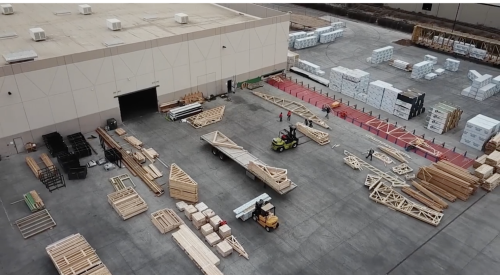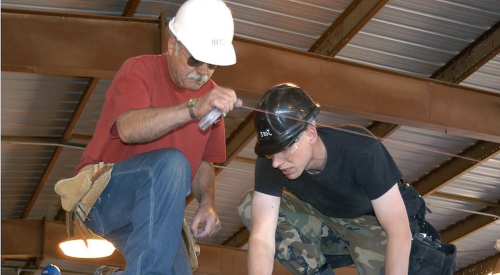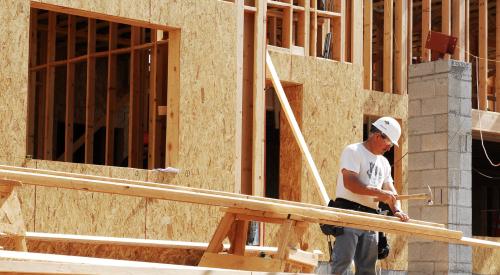It’s no secret that the coronavirus pandemic has made the U.S. construction industry more complex than ever before. But while early shutdowns and ongoing slowdowns have reduced production of new homes, construction teams are back at work, trying to make up the slack.
However, the post-COVID-19 environment brings new challenges, worries, and concerns for workers.
It has been reported that 41% of construction managers cite the effects of the pandemic on their workforce as one of the top three biggest concerns in 2020 … and leaders are thinking about how to create safe, healthy, and COVID-secure working environments while simultaneously driving team motivation.
Driving Motivation and Facilitating Safety
Fortunately, a number of workplace adaptations are emerging as highly effective and efficient ways to support a return to work from both a safety and motivational perspective.
RELATED
- Advice and Preliminary Policy From a Midsize Builder During the Pandemic
- Shut Down or Still Working, Builders Respond to Coronavirus
- What Should You Do if Your Jobsite Has a COVID-19 Case?
- The Link Between Motivation and Loyalty
Improved Scheduling
Scheduling has always been a challenge for home builders (and construction, in general), and COVID-19 restrictions made it worse. Meanwhile, widespread labor shortages that impact on-time delivery are impacted further by a decline in worker motivation and safety concerns.
As a result of a reduced workforce, there is an increased risk that construction workers will be tasked with completing projects without the necessary support, with high potential for injury. Additionally, workers may feel overwhelmed by their workloads which can significantly impact health and wellbeing.
To motivate teams and boost site safety, it is essential for construction managers to place greater focus on scheduling to take into consideration a reduced workforce and potentially an unstable and vulnerable workforce. If team management software or scheduling software has not already been implemented as part of a digital adoption strategy—a type of strategy that is growing rapidly within the construction industry—then now is the time to get to grips with the technology and leverage the value of auch software.
The Role of Workplace Transparency
While 30% of states deemed construction essential during early stay-at-home orders, just 20% allocated the same level of importance to building material suppliers, upon whom construction relies heavily.
Supply chain disruption, not only resulting from the closure of U.S.-based material suppliers but also from closures and delays in reference to international suppliers and logistics firms, is just one of the many worries that weigh on the minds of today’s construction workers. Labor shortages, cancelled projects, and an uncertain economy are also understood to be common concerns at this unusual time.
These worries and concerns among workers are not only causing motivation and productivity to decline, but also can pose a severe threat to workplace safety if workers are preoccupied with these thoughts and are unable to focus exclusively on the task at hand. That’s why transparency is essential.
Workplace transparency is a topic of great debate. While some organizations believe that transparency is key to boosting motivation and productivity while generating a strong, loyal workforce, others are keen to limit information sharing to a need-to-know basis.
While there is no universal right or wrong approach, construction managers may wish to provide additional company resources, share project and client information, or provide regular updates on company health to alleviate some of these concerns and provide greater peace of mind for workers so that they can carry out their tasks with confidence.
Implementing New Health and Safety Regulations
Perhaps one of the biggest motivational drains facing construction workers today is on-site health and safety. Construction sites typically do not lend themselves to social distancing, which introduces the question of how managers can keep teams working together safely, keep teams collaborating and communicating, and maintain team motivation while remaining socially distanced from each other.
The solution is for managers to implement new health and safety regulations for their teams. This is already being done, to an extent, with construction workers having to adapt to wearing face masks on top of their existing personal protective equipment. However, as managers, it is vital to do more to improve workplace motivation.
While creating socially distanced construction sites is challenging, it’s not impossible. There are a number of changes and adaptations that can be made to existing processes, such as shifting meetings from trailers to larger, open-air tents, introducing sanitizer stations, or even setting up a separate wash and sanitary facilities for individual teams, to minimize interactions between various on-site crews. According to global insurance firm AJG, construction managers may find that they can claim for some or all of the additional costs associated with implementing these measures under the federal emergency clause.
Supporting Teams Through Crisis
This year hasn’t been an easy one for the construction industry, but insights firm McKinsey & Co. are confident that construction can emerge stronger from this experience. However, this strengthening of the industry is highly dependent on managers, leaders, and key project influencers being ready and willing to adapt their existing tried-and-tested strategies to better focus on motivating teams and facilitating safety.
RELATED
- 7 Steps to Reducing Cycle Time and Building Homes Faster
- How to Create a Recovery-Friendly Workplace and Support Employees Suffering From Substance Abuse
- In a Crisis, Think Like a Donkey (+ 15 Tips for Working Remotely)
- Are There Lessons From the Great Recession for the COVID-19 Pandemic?
With the numerous new challenges, concerns, and worries facing construction workers today, boosting workplace morale and improving on-site safety may not be easy.
However, by ensuring that teams have the human resources they need to carry out tasks confidently and safely, by being open and honest about the issues within the industry and sharing details on how the company plans to tackle these issues, and by taking measures to make the construction site more secure without affecting team communication and collaboration, managers can successfully improve team motivation and health.
Derek Jones spearheads key initiatives at Deputy, a global workforce management platform for employee scheduling, timesheets and communication. With a focus on construction, Derek helps business owners and workforce leaders simplify employment-law compliance, keep labor costs in line, and build award-winning workplaces. Jones has more than 16 years’ experience delivering data-driven sales and marketing strategies to SaaS companies such as MarketSource and Griswold Home Care.













